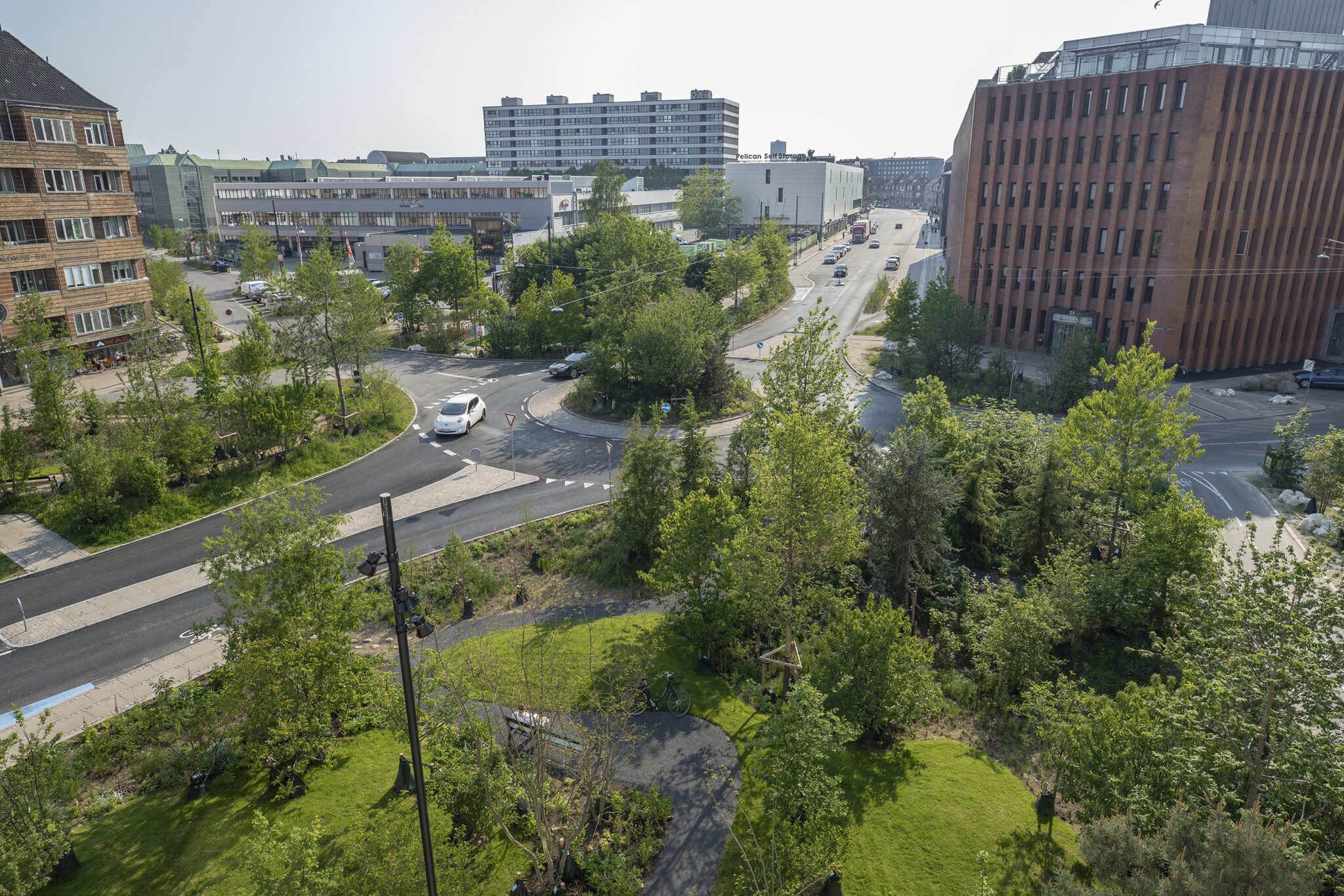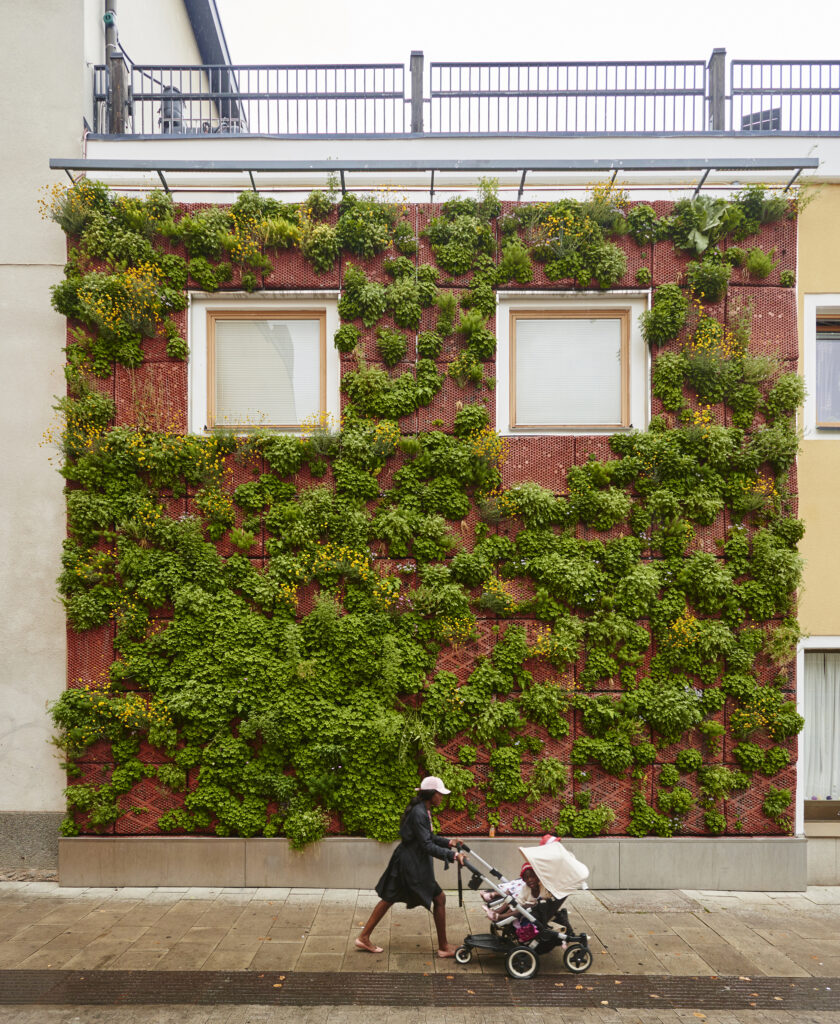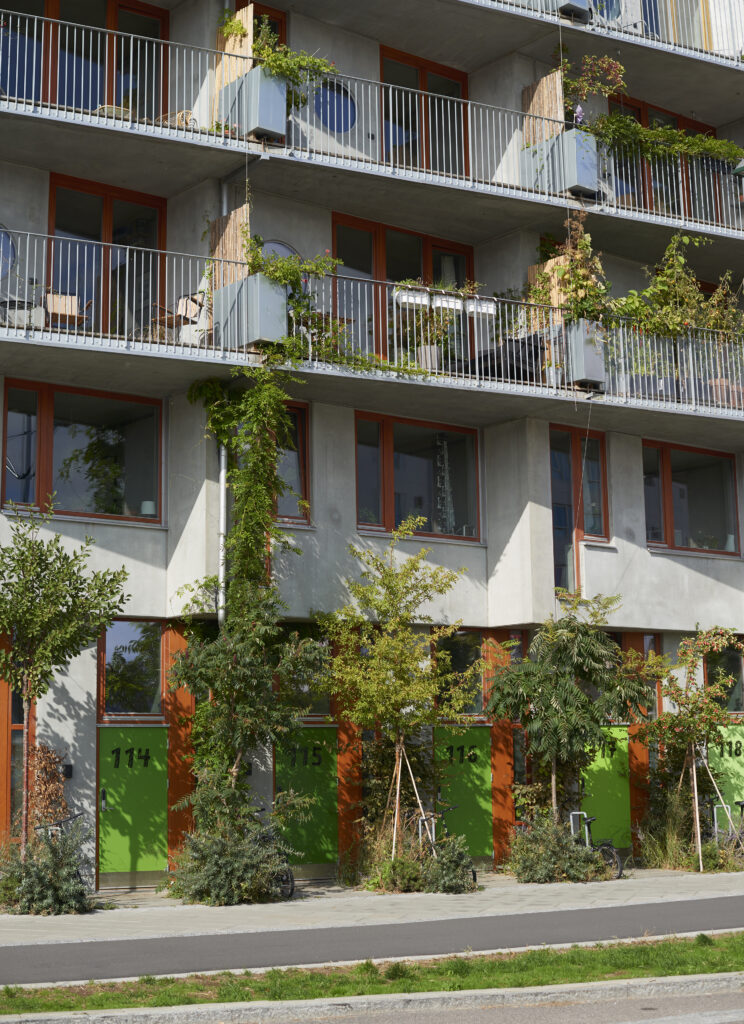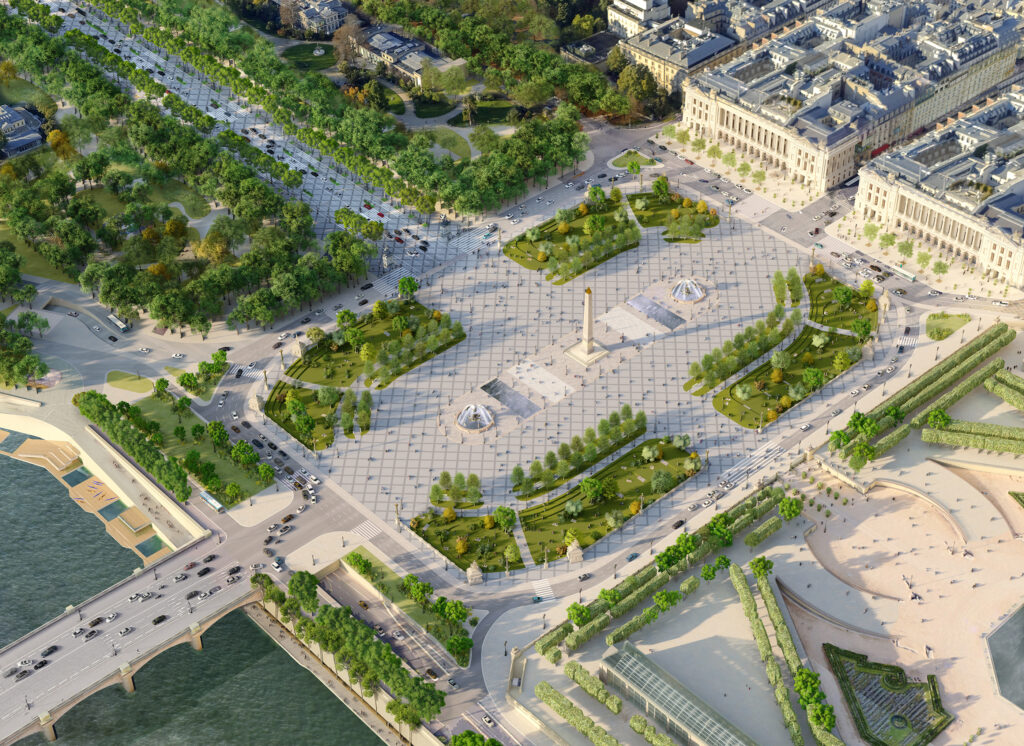Three Perspectives on the Posthumanist Living Environment

How could the design professionals be better involved in resolving increasing environmental crises and reducing the negative impact of construction on the environment? The concept of posthumanism offers new viewpoints for the organisation of the field.
Posthumanism is a set of ideas that updates humanistic ideology, making it correspond to the current conception of interaction between human beings and nature. It is fuelled by the global sustainability crisis, which has been caused by a conception of human beings acting separately from nature. In the globalised world, the chains of human activities and environmental impacts have become more complex and, at the same time, people’s fundamental connection to nature has become blurred. As a counterreaction, many fields have directed their research towards posthumanist themes. Posthumanism is also taking root in architecture and landscape architecture.
Our cultural sphere is a fruitful ground for posthumanism. The welfare ideology of the Nordic Countries has all the ingredients for expanding from societal care to the care of entire ecosystems. Due to late urbanisation, we also appreciate that part of our living environment is in its natural state. Designers have an ability to create new kinds of futures and contribute to the regeneration of natural processes, if we are able to shift from a human-centred mindset towards a more holistic direction.
However, it still needs to be defined what posthumanist design aims to aspire. In this essay, we want to introduce three perspectives on posthumanist living environments. We identify them as important starting points for the planning and design of environments, as well as for the redesign of a more sustainable relationship between the entire society and nature. By identifying existing posthumanist approaches and making them visible, we want to activate discussion and help to mainstream the posthumanist perspectives, as part of the permanent planning and design practices for living environments.

Processes Instead of an End Result
One hundred years ago, functionalism, in which design is based on the function of an object, drew inspiration from a need to build a new and better world after the disastrous World War I. Today, we must design and build in a way that mitigates global environmental destruction. Besides our human needs, we must also take into account the other species on our planet and the ecological processes that maintain life.
We regard the following as the starting points of posthumanist design: ecological and social processes and systems, identifying them and making them visible, as well as upholding, restoring and recreating them. Unlike in functionalism, a key objective of posthumanist design must, in our view, be the design and steering of processes, instead of the design of a static end result.
In addition to landscape structures, individual buildings should also recycle water and nutrients, function as substrates, save natural resources and promote their renewal.
In addition to landscape structures, individual buildings should also recycle water and nutrients, function as substrates, save natural resources and promote their renewal. It should, for instance, be seen in the dimensioning of structures and in an objective to increase the number of multi-species and multi-functional living environments in public and private spaces. The mindset dealing with the design of processes also covers a transfer to a circular economy in construction – which is in its initial phase – and the reduction of chemical loads. Buildings can be regarded as perhaps temporary unions in the cycle of materials, alongside their other qualities.
The process-oriented and regenerative approach requires flexibility and continuous learning, as the existing operating methods are no more sufficient in a changing environment. People and nature depend on each other and develop together, through interactive relationships and feedback. Instead of partial solutions, we must be able to perceive the larger picture, and as designers, we must take more responsibility for supporting processes which are larger than individual projects and which regulate the stability and resilience of the globe. Luckily, the studying of ecological preconditions for design solutions, even in a small scale, opens up thinking and helps to understand more extensive sustainability solutions.

Siegel Architecture also runs the hotel on the ground floor. Underneath the locally sourced oak deck stormwater is taken care of and delayed, making sure the plants can absorb what it needs. All apartments are provided with a planter on its balconies, served by an automatic drip-irrigation system. Photo: Peter Carlsson
Design Is Care
In addition to a circular economy and resource wisdom, posthumanism emphasises, in our view, fostering and care as the contents of activities. The focus must shift from continuous growth to maintenance. Empathy not only with human users but also with other living creatures, and even with nonliving matter, will become a key skill.
During the pandemic, discussion has been held in society on the appreciation of the care sector, ranging from health care to early education and care. A key question in the discussion is whether care should be regarded as an expenditure or as an investment that improves the entire lifespan. The same question can be posed to the design field. Are we a care sector?
Is it profitable to maintain and uphold the green structures that produce ecosystem services – such as carbon sequestration – and does it increase our opportunities now or in the future? Is a well-designed, aesthetical environment an investment in people and in their potential to recover or remain in balance?
Posthumanism emphasises fostering and care as the contents of activities.
People tend to consider the surrounding world to be static, even though, in reality, everything in us and around us is changing. A mosquito goes through its life cycle in three weeks, a dandelion in a couple of months, a pine in 500 years, and stone material in hundreds of millions of years. The ground is still lifting up after the Ice Age, changing both the topography and the shoreline. In a corresponding way, our built environment is being weathered and deteriorated, requiring renovation and maintenance.
In addition, climate change, the lack of resources and nature loss also affect the living environments, water cycle and available materials in cities and towns. Quoting futurist Alex Steffen: “The true measure of the seriousness of the planetary crisis is not destruction but discontinuity.” Amid the changing conditions, maintenance and care improve society’s immune system.

The EU Biodiversity Strategy increases the need for such posthumanist design that takes into account the ecological processes and emphasises care. The strategy has restoration objectives and targets to increase the share of protected land and sea areas to 30%. A new IPCC report has an even more ambitious attitude towards the theme, proposing a 30–50% protection target globally.
The goal is – with the help of concrete commitments and measures – to restore declining ecosystems, enhance carbon sequestration and improve the resilience of the nature network to climate change, for instance. It has been proposed that out of the protected area, ten per cent is designated for strict protection. The objective is to avoid any disturbance to the natural processes in the area. Human activities may be located more freely to the other protected areas.
The question what kind of an urban space could be “no net loss” requires unprejudiced visions, plans and execution – a “no net loss” urban space avoids losing biodiversity and ecosystem services or enables the restoration of natural processes. If people have, so far, damaged planetary systems, it is now time to fix them.
Laying an Emphasis on Doing Together
The objective of posthumanist design to move people out of the centre of activities makes changes to design goals and methods. The design work requires that various types of expertise be combined, and new solutions require co-creation. This is already familiar today, but the focus on ecological expertise and timely actions in the design process are emphasised, as this way, ecological functionality can be positioned on the same level with technological solutions and they can be integrated into a sustainable entity that deals with natural processes.
Today, engagement is part of design work, doing together. However, it is still related to an idea that design logic, as such, is neutral, objective and knowledge-based balancing between various interests. According to Donna Haraway, evolution biologist, we must tear ourselves away from such an old-fashioned western belief in models of science and nature that are convenient but disconnected from life and we must, instead, lean on emotion-based knowledge that is created from an experience of a place.

Our Finno-Ugric culture is a fruitful ground for emotion-based knowledge. Here, we don’t search so much for the meaning of life but a mythological, meaningful place of existence, claims Valdur Mikita, Estonian biologist, semiotician and author. Due to the late urbanisation of our culture, we still have an exceptionally close relationship with nature, on a European scale. Our culture also values equality and care highly, which is indicated by our everyman’s rights – which are globally rare – or by a fairly successful social mixing policy in community planning.
From these starting points, we have the potential to create such environments in which meaningfulness stems from something other than superficial effectiveness, experiences or escapism and in which nature means more than high-performance green infrastructure. Meaningfulness may stem from care provided for people and other creatures, as well as for landscapes, and the feeling of connection between them. The parties other than human beings can be seen as if they were participating in the design work, and not just being objects of the design work.
There is a great deal to draw from our cultural background, if we are able to conceptualise and adapt it, not to mention how awakening it could be internationally. On the other hand, as a legacy of the late urbanisation of our culture, the appreciation and cherishing of outdoor spaces, as well as the focus on the planning and design of our shared outdoor spaces, appear to be low, when compared, for instance, to our Nordic neighbours.
The classic architectural values related to beauty and utility are still important, but, for the part of stability (or sustainability), we will need more research on landscape architecture and urban design, experiments, discussion, criticism and the bringing up of good examples. This way, we will be able to bring together global and local challenges, as well as the special features of our culture, making them a new kind of a more holistic living environment. ↙
ELISA LÄHDE, ILKKA TÖRMÄ, SARIANNA SALMINEN
The authors work with themes related to posthumanist design, having design, teaching and research tasks. Recently, they have opened a platform called Outlines (outlinesforum.org) for design issues dealing with landscape architecture, public space, as well as cities and towns. The forum is built on the posthumanist design perspectives that have been presented in this essay.
SOURCES
Elisa Aaltola: ”Ihminen eläimenä ja osana luontoa”. In Vilma Hänninen & Elisa Aaltola (eds.): Ihminen kaleidoskoopissa. Ihmiskäsitysten kirjoa tutkimassa. Gaudeamus 2020.
David R. Cole & Yeganeh Baghi: ”When Two Worlds Collide: Creatively Reassessing the Concept of a House Beyond the Human”, Qualitative Inquiry vol. 28, no. 5, 2022.
Jacopo Leveratto: Posthuman Architecture: A Catalogue of Archetypes. Applied Research & Design 2021.
Elisa Lähde: Mission Blue-Green. The Significance of Co-Creation to Promote Multifunctional Green Infrastructure within Sustainable Landscape and Urban Planning and Design in Finland. Doctoral dissertation, Aalto Books 2020.
Valdur Mikita: Kanttarellin kuuntelun taito. Translated into Finnish by Anniina Ljokkoi. Sammakko 2018.
Peg Rawes: ”Reputations – Donna J Haraway”. Architectural Review no. 1, 2022, 24–27.
Tuomas Räsänen & Nora Schuurman: ”Johdanto”. In Tuomas Räsänen & Nora Schuurman (eds.): Kanssakulkijat. Monilajisten kohtaamisten jäljillä. Suomalaisen Kirjallisuuden Seura 2020.